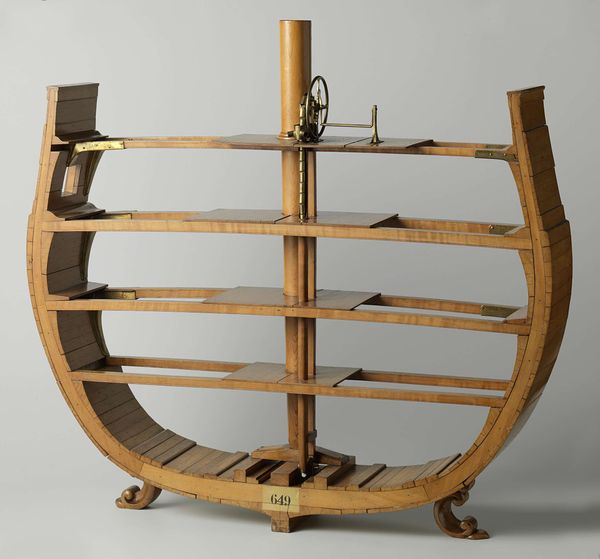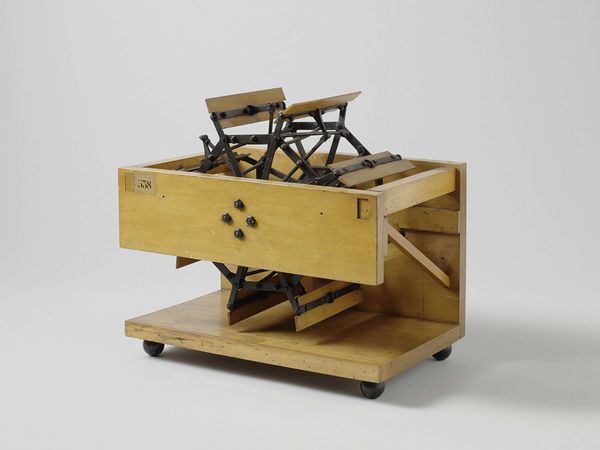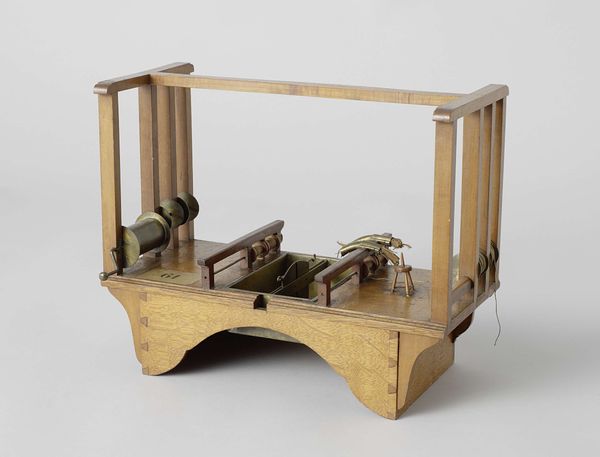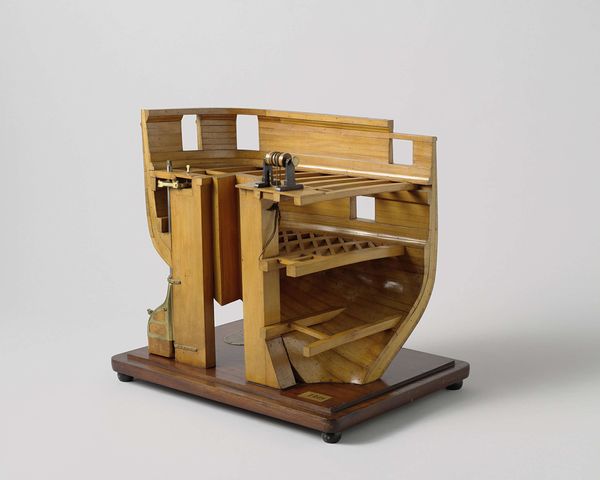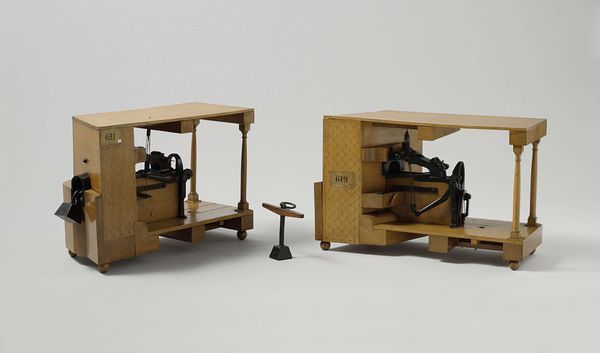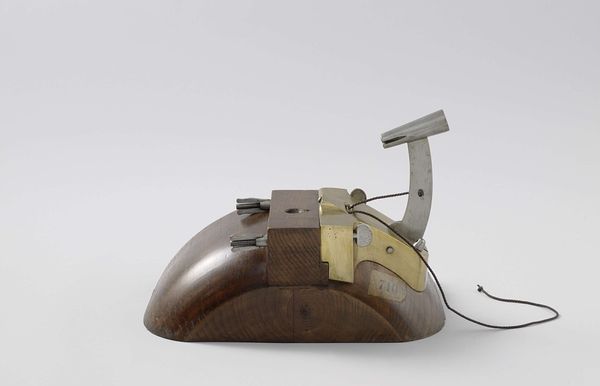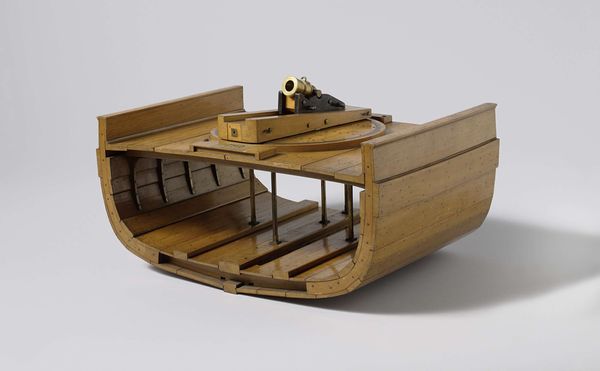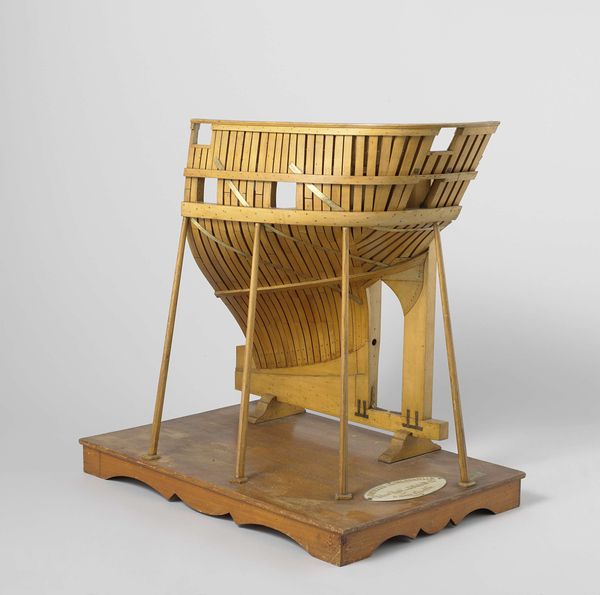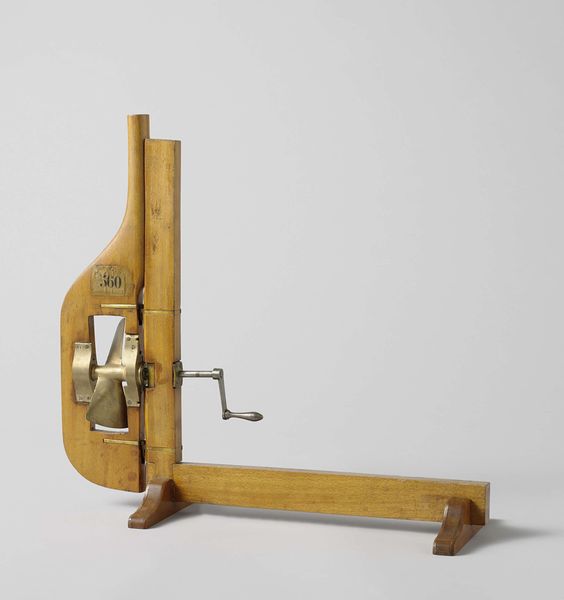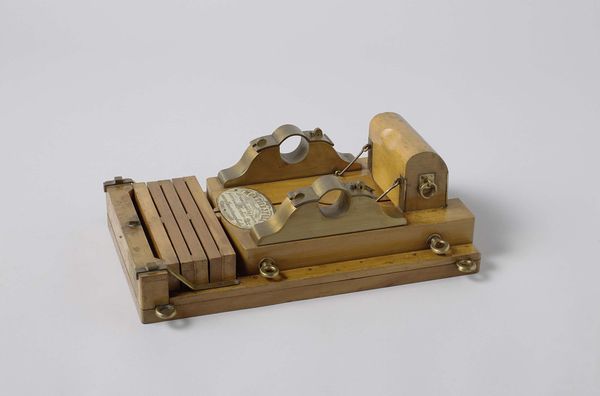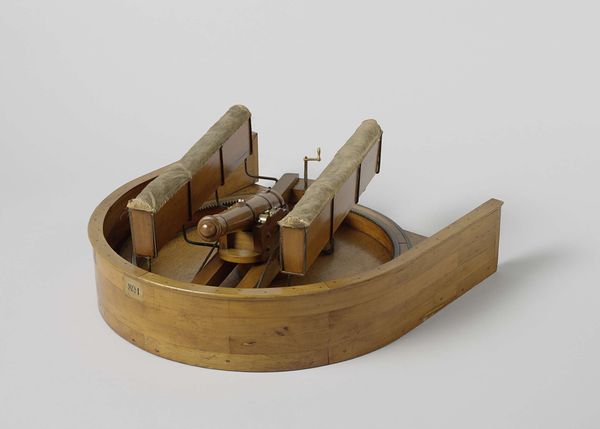
metal, sculpture, wood
#
metal
#
architecture mock-up
#
sculpture
#
wood
#
mechanical engineering model
Dimensions: height 84.5 cm, width 82.5 cm, depth 37 cm
Copyright: Rijks Museum: Open Domain
Editor: Here we have "Model of a Trunk Engine," made in 1855. It looks like a cross-section of a ship, with the engine on display inside the hull. The materials seem to be primarily wood and metal. What symbols do you see in this work? Curator: The engine, rendered with such painstaking detail, pulses with symbolic energy. It's not merely a feat of engineering but also a potent representation of progress, a symbol of human ingenuity conquering the natural world. Look at how the delicate wooden frame cradles the powerful engine. Editor: It’s interesting to think of progress that way. How would viewers at the time have interpreted those symbols? Curator: For them, this wasn't just an engine model; it represented a dramatic shift in societal power. Think about the historical context: the burgeoning industrial revolution, the Victorian obsession with invention and control, a prevailing sentiment that technology could solve any problem. Editor: So the engine embodies this sense of control and optimism? Curator: Precisely! Notice also the juxtaposition of the raw mechanical elements against the almost classical, architectural lines of the frame. It speaks volumes about how humans perceive our role in the environment and in this grand scheme of things. Does that resonate with you? Editor: It does, actually. It feels like a bold statement about humankind shaping the world. This changes the way I initially viewed the artwork. Curator: And what I’ve found so compelling over time is recognizing cultural memory: this continuity and connection between progress, art, and industry. It’s amazing what stories a single object can tell. Editor: I agree, reflecting on the past gives a new dimension to looking at this piece. I'll definitely be thinking more about those layers of meaning.
Comments
rijksmuseum about 2 years ago
⋮
The trunk engine, invented by the British engineer John Penn, greatly improved steam propulsion for ships. Penn’s use of a ‘trunk’, or cylindrical case, housing a connecting rod, instead of a beam or side lever, made the engine more compact and allowed it to be installed horizontally across a vessel’s keel. A number of Dutch naval ships were fitted with the trunk engine. This model represents a 150 h.p. engine.
Join the conversation
Join millions of artists and users on Artera today and experience the ultimate creative platform.
